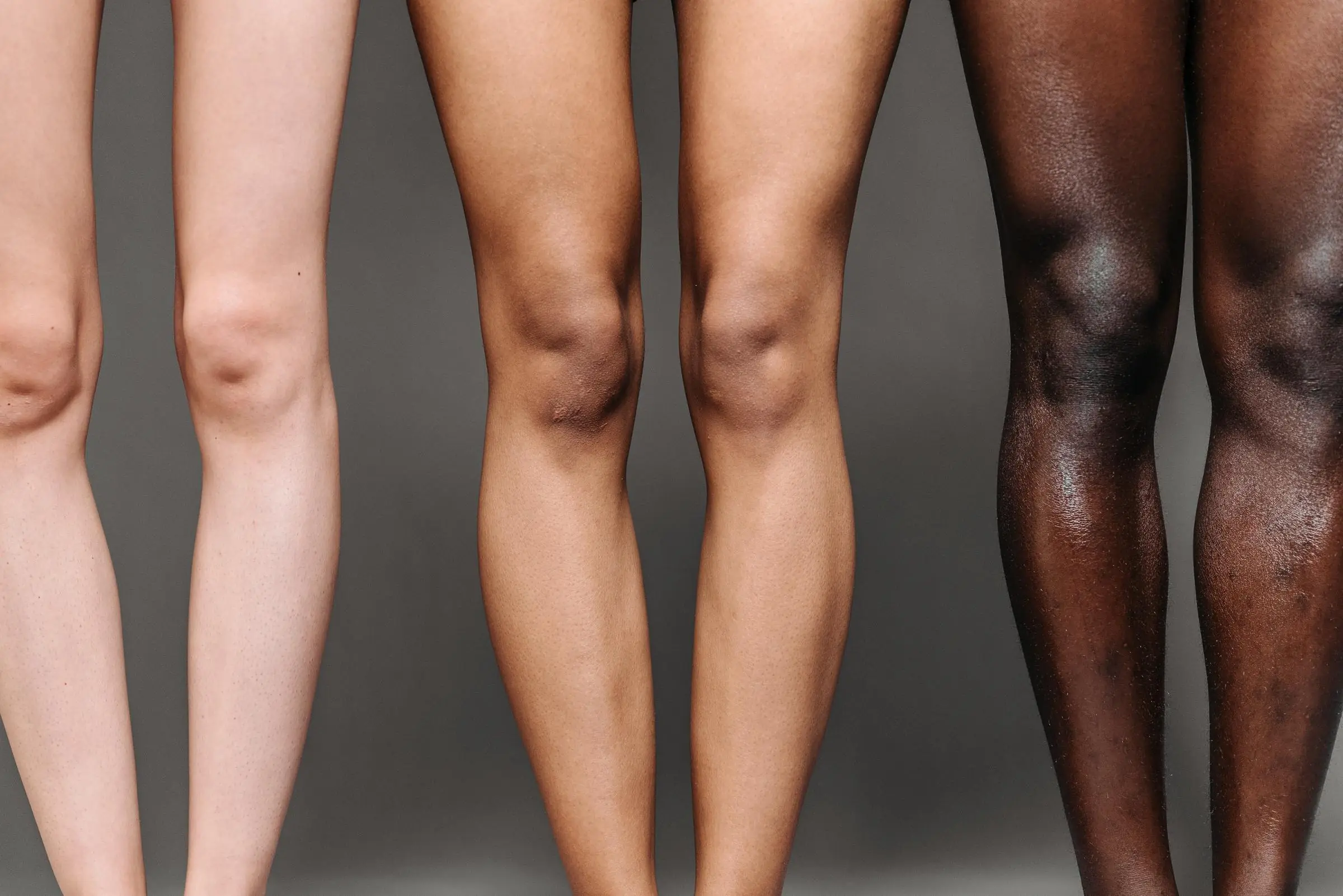If you’re wondering what are the symptoms of arthritis in the legs, you’re in the right place. Arthritis can affect any joint in the body, but when it strikes the legs, it can disrupt everyday life, limit mobility, and dampen your overall well-being. Whether you’re coping with new joint discomfort or supporting a loved one, understanding arthritis symptoms in the legs—along with early warning signs and actionable steps—empowers you for better care and comfort.
Understanding Arthritis in the Legs
Before diving into the specific symptoms, it’s helpful to grasp what leg arthritis really is. Arthritis is not a single disease—there are more than 100 types, but osteoarthritis and rheumatoid arthritis are the most common forms affecting the legs. These conditions cause inflammation and deterioration in the joints, primarily targeting the hips, knees, ankles, or even the feet.
People of all ages can develop arthritis in the legs, although it’s more common with advancing age, previous injuries, overweight, or a family history of joint problems.
What Are the Symptoms of Arthritis in the Legs?
Recognizing the symptoms of arthritis in the legs early can make a huge difference in management and quality of life. Here are the hallmark signs and how you might experience them day-to-day:
1. Leg Pain
Persistent or Recurrent Joint Pain:
Arthritis-related leg pain often ranges from a dull ache to a sharp, throbbing sensation in or around the affected joints—hip, knee, ankle, or even across the entire leg.
- Pain is typically worse during or after movement, or when climbing stairs and walking.
- Some experience pain at rest, especially as arthritis progresses.
Practical Example: If you feel knee pain every morning or get hip aches after a short walk, it may be arthritis—not just “getting older.”
2. Stiffness in the Leg Joints
Arthritis often causes joint stiffness, especially upon waking up or after sitting still.
- Stiffness may last more than 30 minutes for inflammatory types like rheumatoid arthritis.
- For osteoarthritis, morning stiffness usually improves within 30 minutes but returns after inactivity.
Actionable tip: Gentle stretching or a warm shower in the morning can help ease stiffness and kick-start your mobility.
3. Swelling and Redness
Inflammation Leads to Swollen, Tender Joints:
You might notice visible swelling around the knees, ankles, or feet.
- Swelling can feel soft (from joint fluid) or firm, sometimes forming bumps called nodules.
- Joints may appear red or feel warm to the touch.
4. Decreased Range of Motion
Reduced Flexibility:
Arthritis makes it harder to fully straighten or bend your leg joints.
- Simple tasks like climbing stairs, sitting, or rising from a chair become more challenging.
- You may hear cracking or popping sounds (“crepitus”) during movement.
5. Weakness and Muscle Wasting
Muscle Weakness:
Arthritis pain can cause you to use the affected leg less, leading to muscle thinning or weakness around the joint.
- Muscles may look smaller, and the leg might “give way” when weight-bearing.
Secondary and Less Common Symptoms of Arthritis in Legs
While the main signs focus on pain and movement, arthritis in the legs can have other effects on your body and daily function.
- Fatigue: Chronic inflammation can leave you feeling unusually tired, even with minor activity.
- Tenderness: Joints may hurt when lightly touched or pressed.
- Skin changes: Rashes or small lumps (nodules) can form near the knees, feet, or shins, particularly in rheumatoid or psoriatic arthritis.
- Numbness or tingling: If joint swelling compresses nearby nerves, you might experience tingling sensations down the legs.
Types of Arthritis That Affect the Legs
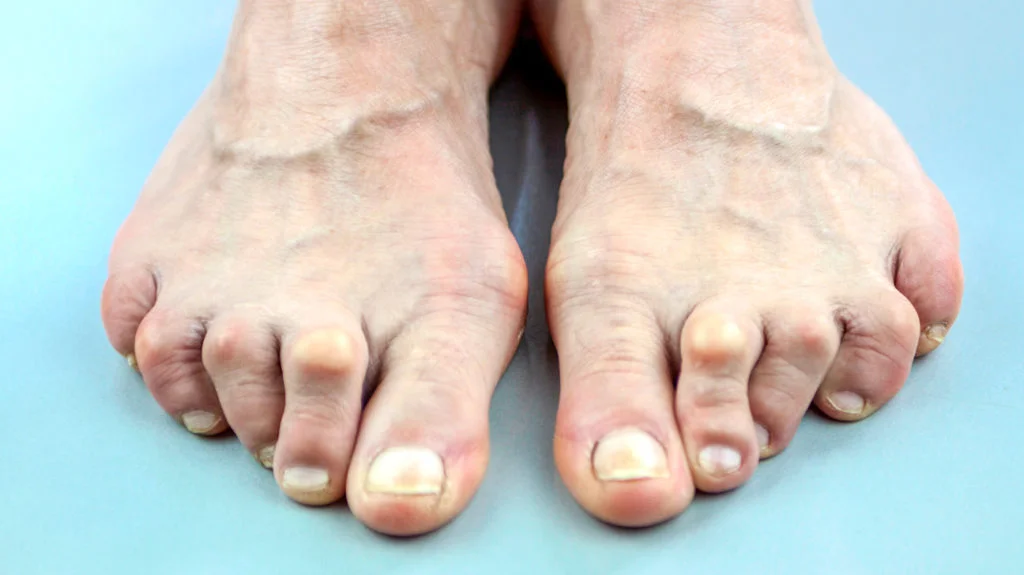
Understanding the type of arthritis helps to anticipate symptoms and target your self-care.
Osteoarthritis (OA)
- Results from wear-and-tear, commonly affects the knees, hips, and sometimes the ankles.
- Symptoms: Pain worsens with use, stiffness after rest, creaking in joints, limited movement.
Rheumatoid Arthritis (RA)
- An autoimmune condition where the immune system attacks joint lining.
- Symptoms: Swelling, warmth, prolonged morning stiffness, pain in both legs equally, systemic symptoms like fatigue and low-grade fever.
Other Forms
- Psoriatic arthritis: May come with skin plaques and affects toes or ankles.
- Gout: Sudden, severe pain (often in the big toe or foot), swelling, and redness.
- Polymyalgia rheumatica: Stiffness and pain in the hips or thighs, especially in older adults.
How to Recognize Early Symptoms of Arthritis in the Legs
Catching arthritis in the legs early leads to better outcomes. Warning signs to watch for:
- Pain or stiffness after new activities (e.g., after a long walk or standing)
- Swollen or puffy appearance in the knees or ankles
- Difficulty putting full weight on the leg without discomfort
- Feeling like your knee or ankle might buckle unexpectedly
- Stiffness that doesn’t go away with light movement
If you notice these signs, keep a symptom journal and consult a healthcare provider.
Diagnosing Arthritis in the Legs
Medical diagnosis of leg arthritis typically includes:
- Physical exam: A doctor checks for swelling, range of motion, warmth, and tenderness.
- Medical history: Your personal and family history, patterns of pain, and any injuries.
- Imaging: X-rays, MRI, or ultrasound to evaluate joint damage and rule out other causes.
- Blood tests: Used to detect inflammation markers and distinguish between different types of arthritis (e.g., rheumatoid factor, CRP, uric acid).
Managing Symptoms of Arthritis in the Legs: Actionable Strategies
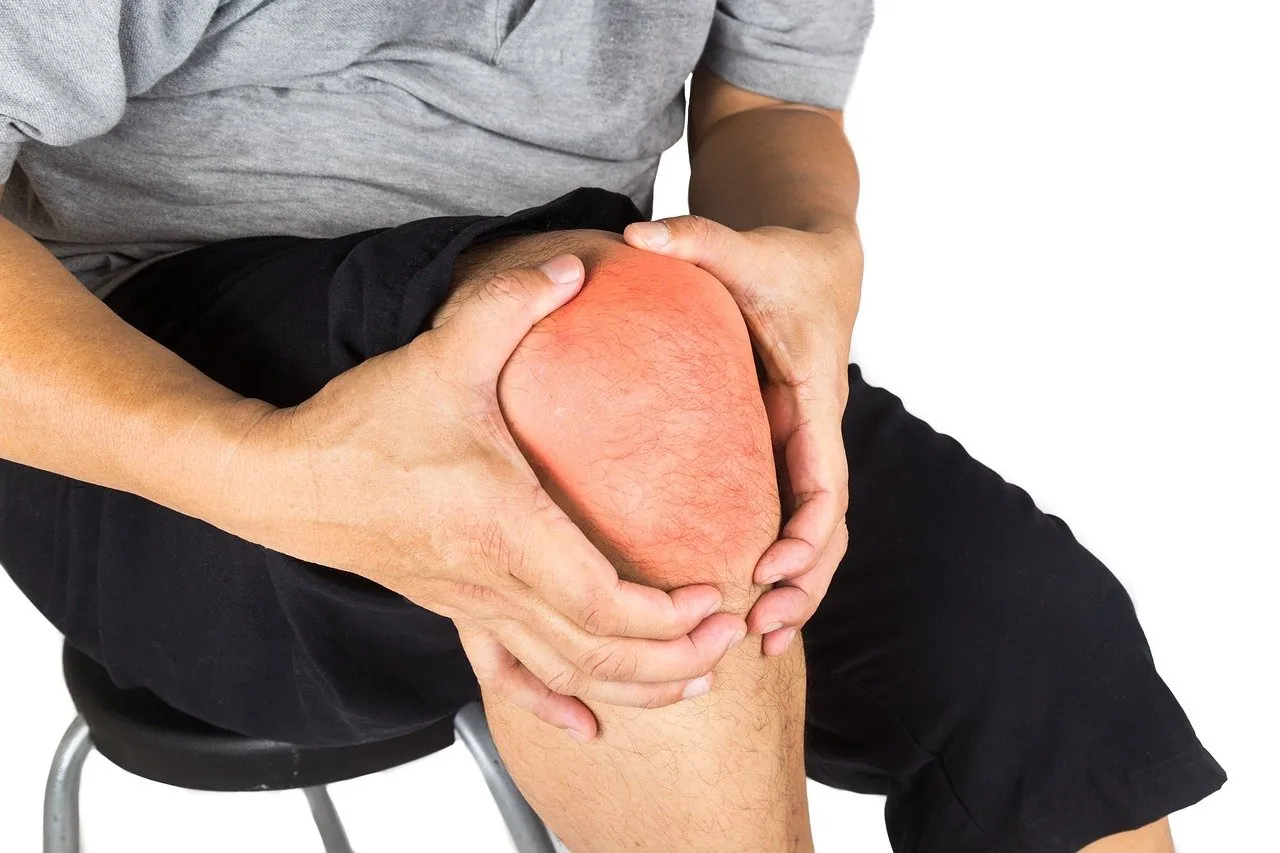
Stay Active, but Smart
- Low-impact exercise like swimming, water aerobics, or cycling supports joint health and maintains flexibility without overstressing your legs.
- Targeted stretching can improve range of motion and reduce stiffness. Try gentle yoga or basic calf, thigh, and hip stretches daily.
Weight Management
- Maintain a healthy weight: Every extra pound puts additional stress on leg joints, especially knees and hips.
- Even modest weight loss can significantly lessen pain and slow joint damage.
Pain Relief Approaches
- Medications: Over-the-counter options like acetaminophen or NSAIDs can help with mild pain, but always follow medical advice.
- Hot/cold therapy: Warm compresses loosen stiff joints; cold packs reduce swelling and numbing sharp pains.
Supportive Devices and Footwear
- Orthotic insoles or supportive shoes can align the feet and knees properly and ease joint burden.
- Canes or walkers may help during severe flare-ups, offering stability and reducing risk of falls.
Joint Protection Tips
- Use handrails, ramps, or shower chairs in unsafe environments.
- Avoid high-impact activities like running on hard surfaces that worsen symptoms.
Professional Care and When to Seek Help
If symptoms disrupt your daily living, worsen over time, or involve fever, unexplained weight loss, or significant swelling, consult a rheumatologist or orthopedic specialist. Early medical intervention leads to better mobility and less joint damage over the years.
Variations in Arthritis Symptoms by Leg Joint and Activity
Symptoms by Leg Joint Location
Arthritis symptoms can differ depending on the specific joint affected in the legs, creating various patterns of discomfort and mobility issues:
Knee Arthritis
- Locking or Catching: Some individuals experience sudden locking, where the knee can’t fully bend or straighten, caused by loose fragments of cartilage or bone.
- Grinding Sensation: The knee may feel like it’s grating on movement, particularly while going down stairs or standing from a seated position.
- Instability: Sudden “giving out” of the knee is common, leading to a feeling of insecurity with weight-bearing.
Hip Arthritis
- Groin Pain: Unlike knee arthritis, hip arthritis pain is often felt deep in the groin or on the outside of the hip, sometimes radiating down the thigh.
- Difficulty with Rotation: Activities like crossing your legs or putting on socks may become difficult due to hip joint stiffening.
- Trendelenburg Gait: Weakness in hip muscles due to chronic pain can cause a “waddling” walk, where the pelvis drops on the opposite side while walking.
Ankle and Foot Arthritis
- Limited Push-Off: Arthritis in the ankle or big toe (hallux rigidus) reduces your ability to push off when walking, resulting in shorter steps and foot pain.
- Bony Bumps: Bone spurs (osteophytes) can develop at the back or sides of the ankle or toes, leading to calluses and discomfort in footwear.
- Toe Deformities: Chronic inflammation may cause the toes to curl (hammer toes) or the big toe to turn inward (bunion).
Activity-Specific Symptom Flare-Ups
- Morning Stiffness After Waking: Prolonged immobility overnight leads to greater stiffness that gradually improves with the day’s activities.
- Increased Pain After Activity: Stairs, squatting, long walks, or standing can provoke pain, swelling, and sometimes a feeling of joint “heat.”
- Weather Sensitivity: Many people with leg arthritis note flares in pain and stiffness with humidity, rain, or barometric changes, though mechanisms are not fully understood.
Differences in Symptoms by Arthritis Type and Underlying Cause
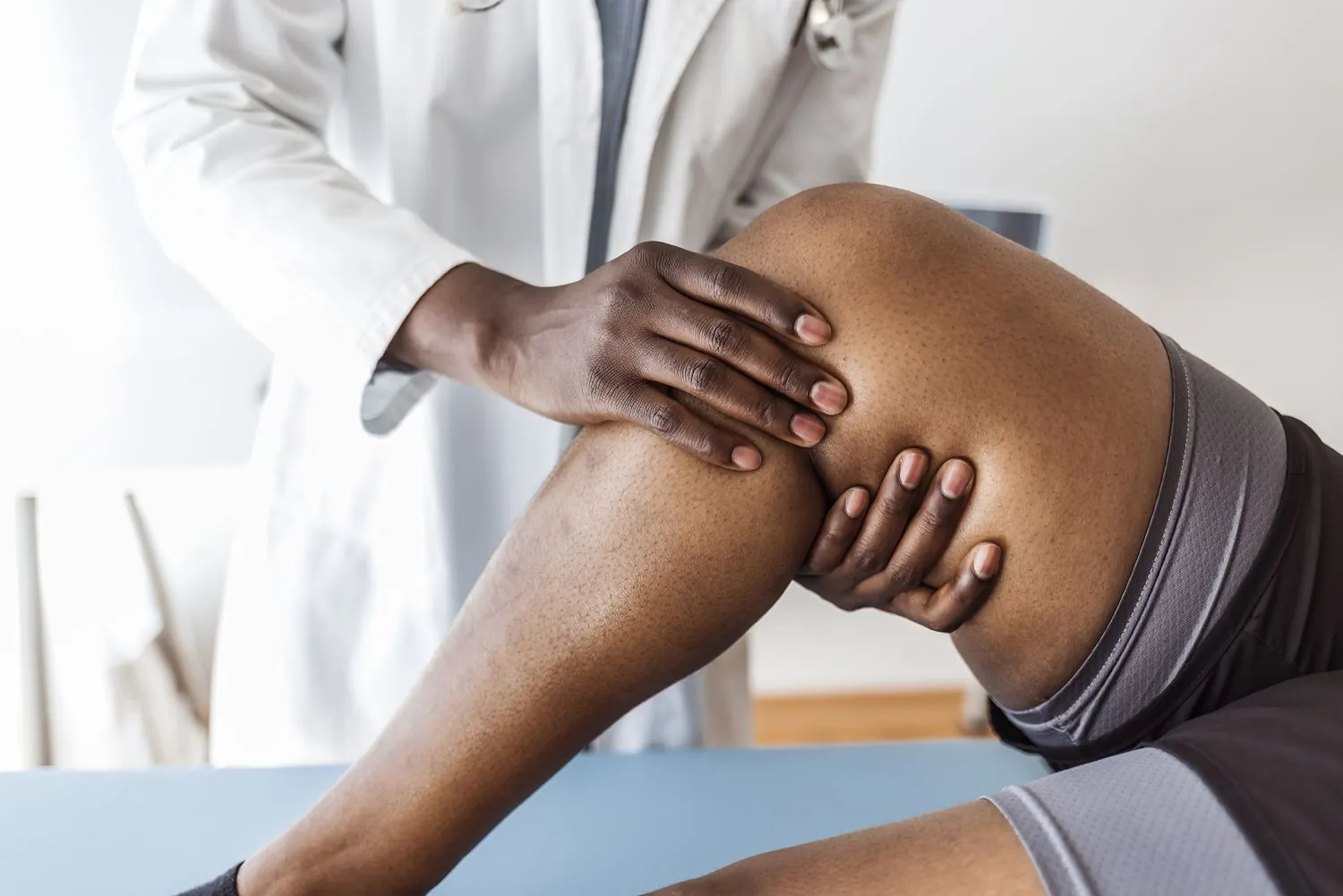
Understanding the underlying cause helps distinguish symptoms and improve targeted care.
Osteoarthritis (OA) vs. Inflammatory Arthritis
Osteoarthritis:
- Predominates with pain after use, minimal swelling, and joints that creak or grind.
- Joint deformities develop slowly; involvement is often asymmetric, such as one knee more than the other.
Inflammatory Arthritis (Rheumatoid, Psoriatic, Juvenile, etc.):
- Symptoms are more aggressive in the morning or after rest, with pronounced morning stiffness.
- Symmetrical joint involvement (both knees, both ankles).
- Swelling is pronounced, surrounding tissues are red and hot, and systemic symptoms (fever, malaise, weight loss) are more common.
Post-Traumatic Arthritis
Arthritis that follows a previous joint injury may present with:
- Early-onset pain (often years sooner than primary OA).
- Noticeable joint instability and rapid loss of function.
- Swelling and pain more likely after specific high-impact activities or changes in weather.
Crystal-Induced Arthritis (Gout, Pseudogout)
- Gout attacks target the big toe (podagra) but also ankles and knees—marked by sudden, severe pain, redness, warmth, and swelling.
- Pseudogout (calcium pyrophosphate deposition) often affects knees, causing pain and swelling resembling infection.
Arthritis Due to Autoimmune or Systemic Disease
- Lupus or vasculitis can lead to vague leg pain with transient swelling and skin changes (purpura, ulcers).
- Infectious (septic) arthritis causes acute, severe pain and systemic symptoms (high fever, chills)—this is a medical emergency!
Impact of Leg Arthritis Symptoms on Daily Life: Functional and Emotional Consequences
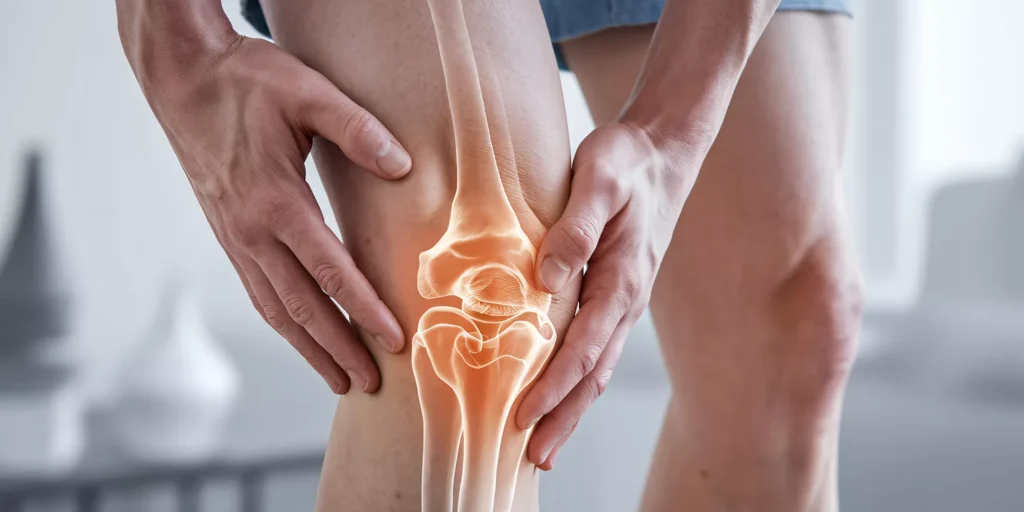
Walking, Balancing, and Independence
- Limited Walking Distance: Severe leg arthritis can restrict walking to just a few steps, affecting independence and ability to shop, work, or socialize.
- Frequent Falls: Weakness and instability often lead to tripping or falls, especially in older adults or those with advanced disease.
- Avoidance Behaviors: Fear of pain or falling may lead to intentional underuse of the leg or avoidance of social events, sports, or favorite hobbies.
Sleep Disruption
- Nocturnal Pain: Discomfort at night, especially in the hips or knees, is a common reason for insomnia or poor sleep quality.
- Restless Legs: Arthritis-related nerve compression or inflammation can contribute to restless legs syndrome, compounding sleep issues.
Mental and Emotional Impact
- Anxiety and Depression: Daily pain and reduced mobility often lead to frustration, sadness, or a feeling of helplessness.
- Social Isolation: Growing difficulty in participating in family, work, or community events can foster loneliness and isolation.
- Reduced Work Productivity: Chronic pain and stiffness hinder concentration, participation, and the capacity to carry out physically demanding jobs.
Expert Guidance: Differentiating Arthritis Symptoms from Other Leg Problems
Not every leg ache is arthritis—early and accurate recognition saves unnecessary worry.
Key Differences to Watch
- Tendon or Ligament Injury: Pain is sharper, often linked to sudden movement or trauma, and usually localizes to soft tissue—improves with rest.
- Venous Insufficiency or Blood Clots: Swelling in just one leg, alongside heat or skin discoloration, suggests a vascular source rather than joint swelling.
- Neuropathy: Tingling, burning, or shooting pain with numbness suggests nerve problems (e.g., sciatica, diabetic neuropathy) rather than joint inflammation.
When to Seek Immediate Medical Attention
- Sudden, excruciating joint pain with redness, fever, or inability to move the joint (possible septic arthritis or acute gout attack)
- Significant trauma with immediate swelling or deformity
- Signs of deep vein thrombosis: severe one-sided leg swelling, pain, and redness (risk of pulmonary embolism)
Holistic Approaches and Lifestyle Modifications for Leg Arthritis
Nutrition and Supplements
- Anti-inflammatory Diet: Consuming omega-3-rich fish, leafy greens, nuts, berries, and whole grains helps reduce inflammation.
- Supplements: Glucosamine, chondroitin, or turmeric may offer mild benefit for some people, but always consult your doctor before starting supplements.
Mind-Body Practices
- Tai Chi and Yoga: These gentle movement therapies can improve flexibility, reduce fall risk, and ease stress.
- Mindfulness and CBT: Psychological techniques help with pain perception, emotional coping, and bolster motivation to stay active.
Adaptive Home Strategies
- Install grab bars in bathrooms, use non-slip mats, and ensure adequate lighting to prevent falls.
- Arrange furniture to create clear paths, remove tripping hazards, and use raised toilet seats or chairs for easier rising.
Community and Social Support
- Join arthritis support groups, exercise classes, or educational workshops to share strategies, stay motivated, and reduce isolation.
Frequently Asked Questions About Arthritis Symptoms in the Legs

Is the pain from arthritis constant or does it come and go?
It can be both. Many report worse leg pain after activity or first thing in the morning, but “flare-ups” can bring persistent discomfort for days or weeks.
Can arthritis in the legs cause numbness or tingling?
Yes. Swelling or joint changes may press on nearby nerves, leading to numbness, tingling, or even shooting pains down the legs.
Will exercise make my leg arthritis worse?
The right kind of exercise helps! Low-impact movements strengthen muscles and improve flexibility, which can actually protect your joints.
What can I do at home to relieve leg arthritis symptoms?
Besides medications, focus on joint-friendly movement, healthy weight, proper shoes, and alternating heat and ice packs as needed.
Conclusion
The most common symptoms of arthritis in the legs include joint pain, stiffness (especially after rest), swelling, tenderness, and reduced mobility—a combination that can significantly impact walking, standing, and overall well-being. Recognizing symptoms early, applying practical self-care, and working with your healthcare team gives you the best shot at maintaining an active and comfortable lifestyle.
